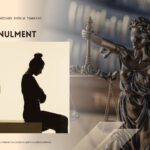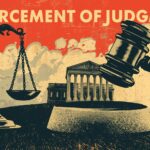At our law office, we’ve handled numerous cases involving extrajudicial settlement of estate, and one of the most common questions we get from clients is: Why do we need this?
Many assume that once a loved one passes away, their heirs can immediately take possession of the assets without any legal formalities. However, that’s not the case.
An extrajudicial settlement is required to formally establish your rights as heirs, transfer ownership of properties, and protect your interests. Without it, the estate remains legally unsettled, making it difficult—if not impossible—to sell, mortgage, or transfer properties in the future. Banks, government agencies, and the Register of Deeds will require this document before recognizing any claims.
Understanding this process can save families from legal complications, unnecessary disputes, and delays in transferring assets. Here’s what you need to know:
What is an Extrajudicial Settlement?
An extrajudicial settlement allows heirs to divide the estate of a deceased person without court intervention, as long as certain legal conditions are met. It’s a faster and less expensive alternative to judicial proceedings, making it an ideal option for families who want a smooth transition of assets.
When Can You Use This Process?
So that the heirs can avail of the Extrajudicial Settlement, every single one of them should participate and consent. Under the Rules of Court (Rule 74, Section 1), the following conditions must be met for an extrajudicial settlement:
1. The deceased did not leave a will.
2. There are no outstanding debts, or any debts have been fully paid.
3. All heirs are in agreement on how to divide the estate. If there are minors, they must be represented by a legal guardian.
4. The agreement is documented in a notarized public instrument.
5. The settlement is published in a newspaper for three consecutive weeks to notify potential creditors.
6. A bond is posted if personal property is involved, ensuring creditors can claim what is due to them.
How Does It Work in Real Life?
Imagine a father who passed away, leaving behind a house and a car. His three adult children agree to the following: The eldest child keeps the house; the second child takes the car; and the youngest receives cash equal to their share.
To make this arrangement legally binding, they draft a Deed of Extrajudicial Settlement outlining the division of assets, have the document notarized, publish the settlement in a newspaper, and register it with the Register of Deeds to officially transfer ownership.
By following these steps, they avoid the time-consuming and expensive court process while ensuring that everything is done legally and fairly.
Potential Risks and How to Avoid Them
While this process is straightforward, certain risks must be considered.
First, if an heir is excluded, they can challenge the settlement in court.
Second, creditors can still claim unpaid debts within two years after the settlement.
Third, failure to publish the agreement can render it invalid against third parties.
To prevent legal issues, make sure that all heirs are properly included and that every legal requirement is strictly followed.
Supreme Court Rulings That Matter
Legal precedents emphasize the importance of compliance. In Amlayon v. Roman Catholic Prelate (2021), the Supreme Court ruled that failing to publish the extrajudicial settlement makes it void against third parties. In Cruz v. Cruz (2018), it was ruled that a settlement that excludes rightful heirs is invalid. And in Navarro v. Harris (2021), it was ruled that fraudulent settlements that aim to deceive other heirs are void from the start.
Is This the Right Option for You?
An extrajudicial settlement can be a simple and practical solution, but it must be handled properly to avoid future disputes. If you need assistance in drafting and processing an extrajudicial settlement, consulting a lawyer ensures that everything is legally sound and in your best interest.
#EstateSettlement #InheritanceLaw #FamilyLaw #KnowYourRights #LegalGuide




Leave a Reply